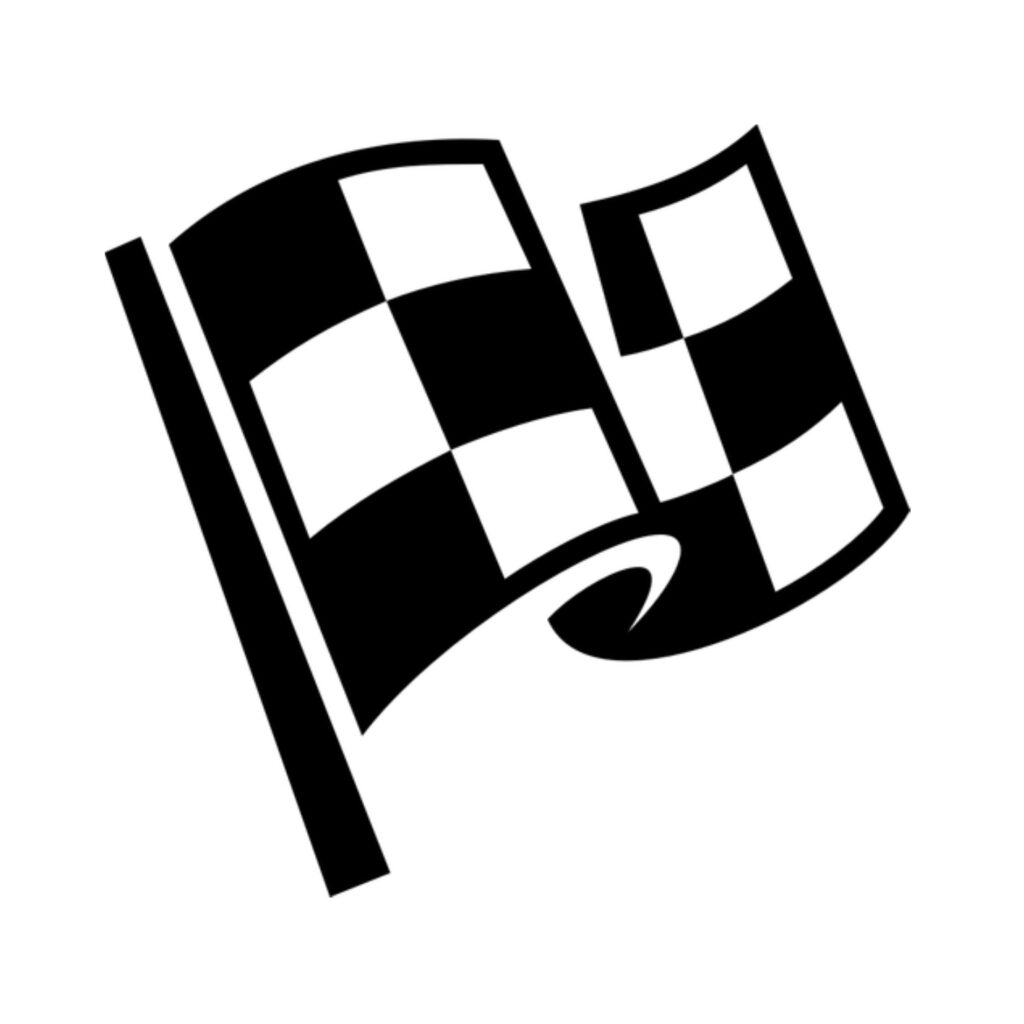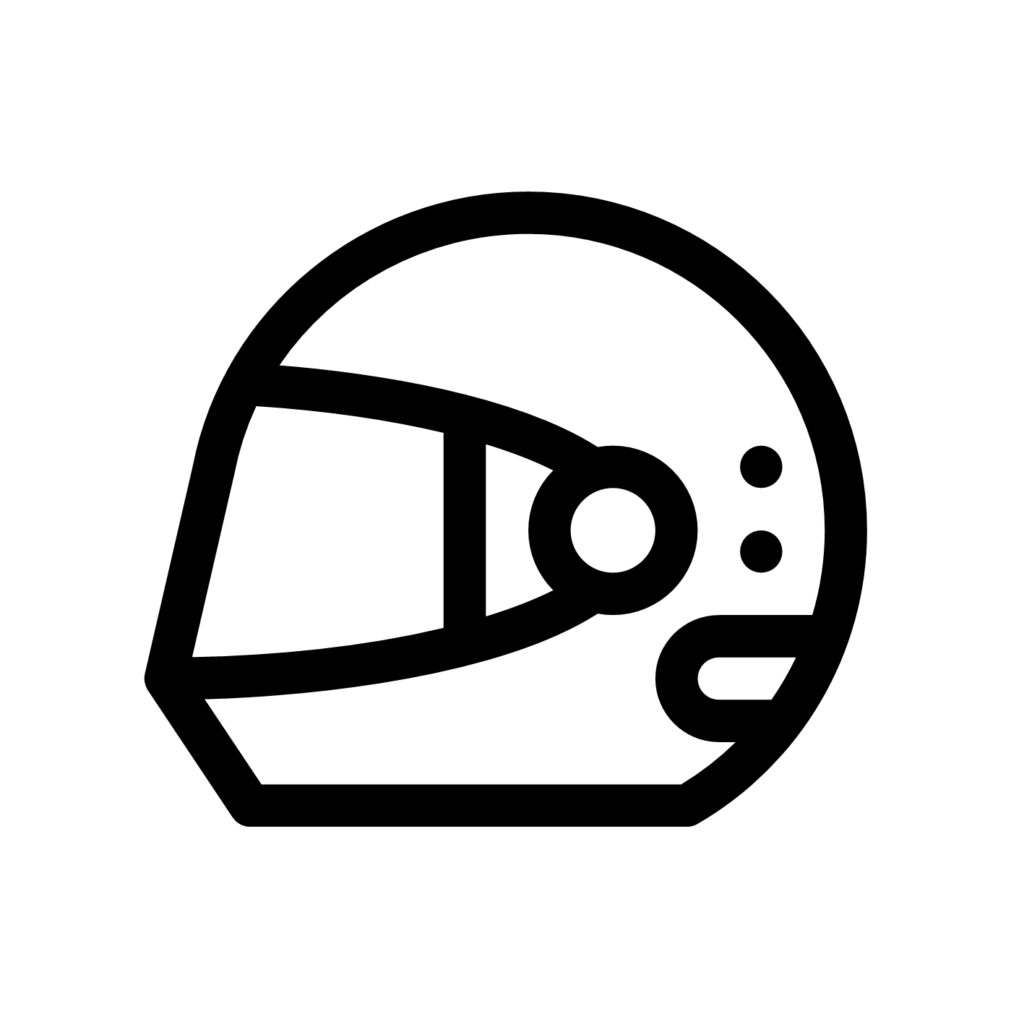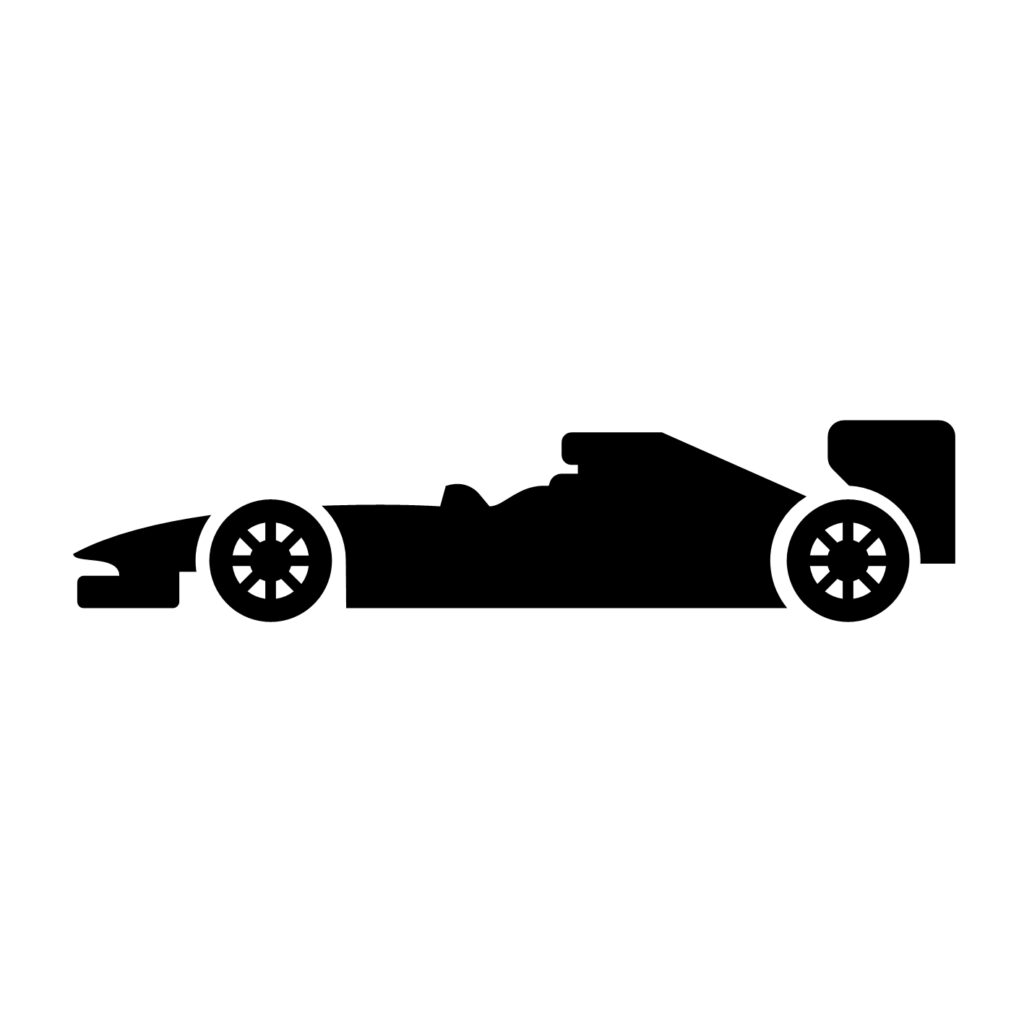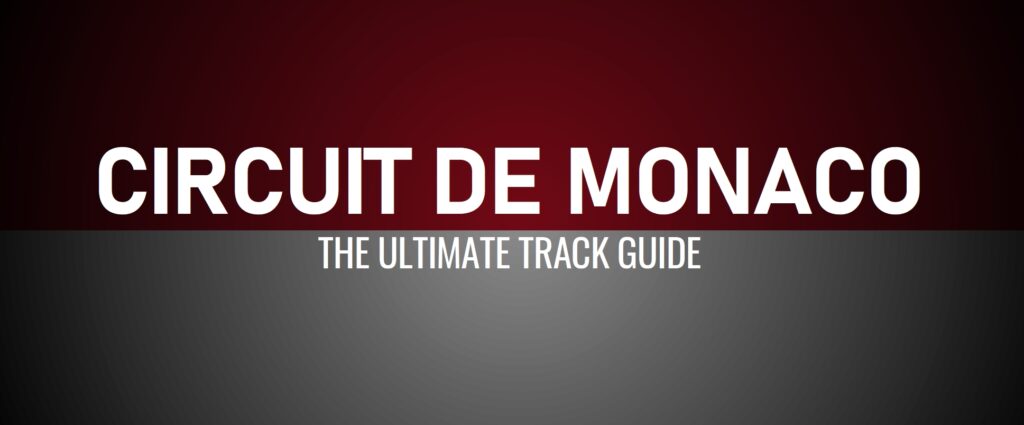
Situated in the harbour-side of one of the most picturesque places in Europe, the prestigious Monaco Grand Prix is held every year in May. The cars and drivers are pushed to their limits as they slide through the streets of Monte Carlo on the Circuit de Monaco.
| FIRST F1 RACE | 1950 |
| TRACK LENGTH | 2.075 miles |
| NUMBER OF LAPS | 78 |
| NUMBER OF TURNS | 19 |
| MOST POLES | Ayrton Senna (5) |
| MOST WINS | Ayrton Senna (6) |
Is there anywhere more synonymous with Formula 1 than Monaco? The most prestigious race on the calendar is the one that every driver hopes to win at least once in their career. Monaco’s affinity with motorsport began over ninety years ago. Anthony Noghes is the man who came up with the idea for a race around the streets of Monte Carlo, and was encouraged after drawing up plans for Circuit de Monaco and showing them to local racer Louis Chiron.
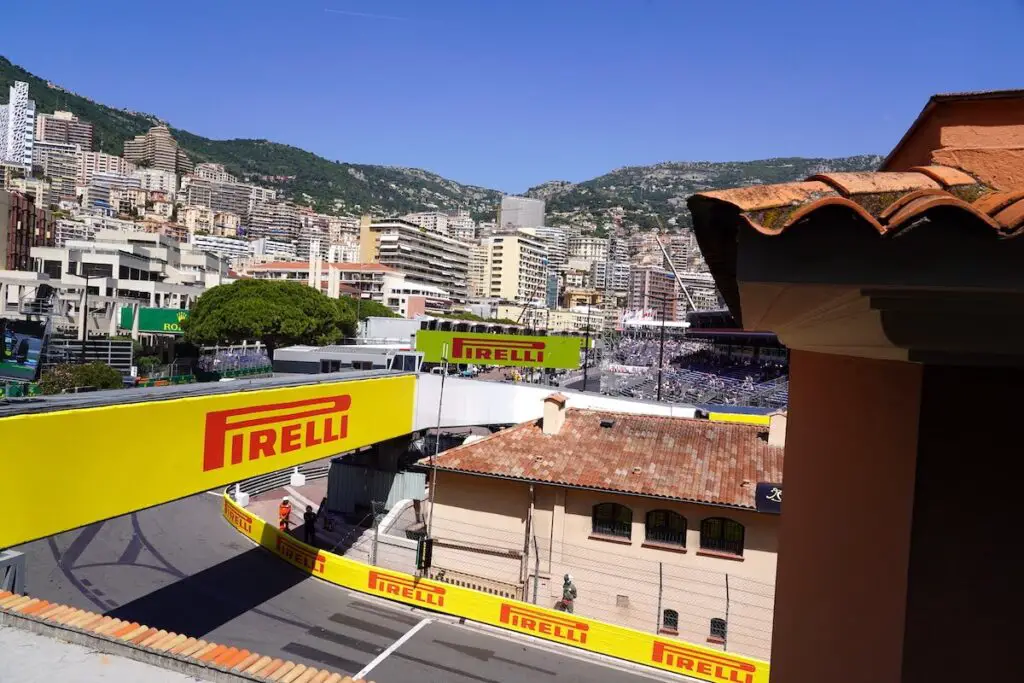
Noghes had to convince the Royal family to run a race on their streets; but they didn’t take much convincing. William Grover-Williams won the first Monaco Grand Prix at Circuit de Monaco in 1929 and from there an almost annual tradition was born. Both Noghes and Grover-Williams are celebrated in Monaco today. The final corner of Circuit de Monaco is named in honour of its creator, while a statue of Grover-Williams racing can be found on the inside of the first turn.
The race soon became a round of the European Grand Prix season and after a post-war revival led by Noghes in 1948, the event was included as a round of the very first Formula 1 Drivers’ Championship. The first F1 race here was won by Juan Manuel Fangio. It was then run for sportscars in 1952, before not being held in 1953 or 1954. Since 1955 however, the Monaco Grand Prix has appeared on the F1 calendar in every year since, except the coronavirus-impacted 2020 season.

It’s hard to pick which part of the Circuit de Monaco is the most iconic. After the cars have passed the Ste Devote Church at the demanding first turn, they run up the hill towards Casino Square, before finding the optimal braking zone at Mirabeau. From there, it’s downhill towards the hairpin – the slowest corner on the calendar – through Portier and into the tunnel. After the chicane, the speeds increase as the drivers head to Tabac before flying past La Rascasse restaurant and the final turn. Read more: Monaco – The Jewel in the Crown.
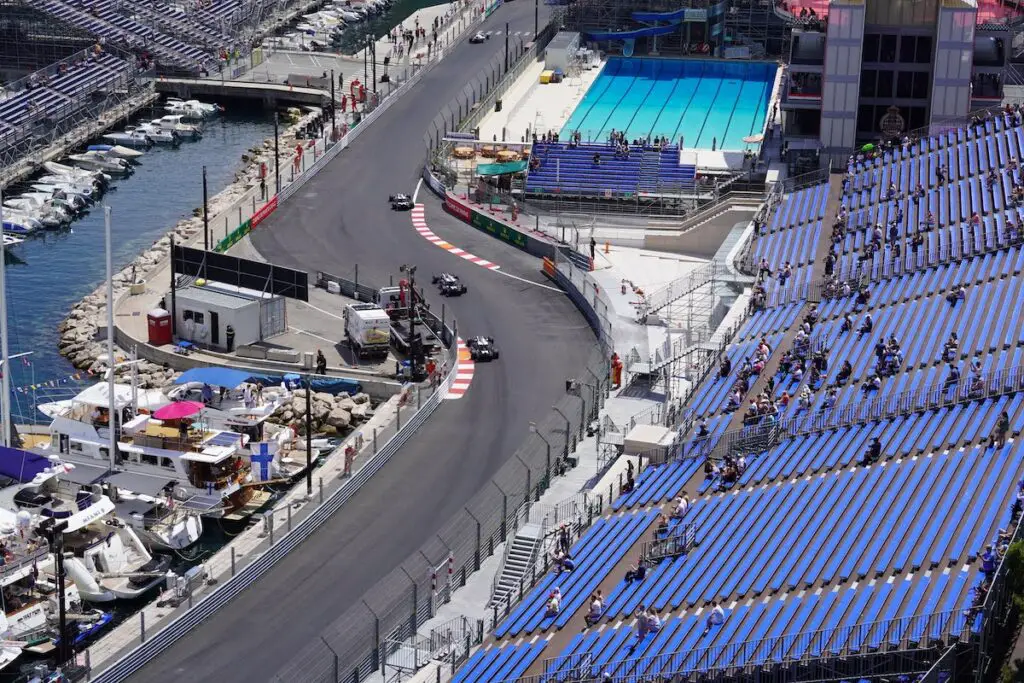
Monaco’s layout has remained largely the same over the years, In 1955, modifications to Ste Devote shortened Circuit de Monaco by 35 metres and the start/finish line was moved from the harbour to its current location. 1973 saw Circuit de Monaco extended by 135 metres, adding a new piece of track along the port area, and introducing a bend around the famous La Rascasse restaurant. Chicanes at Anthony Noghes and Ste Devote were added in 1976, and the turns near Casino Square were re-profiled. More minor changes followed, along with new pit buildings in 2004.
Despite being Formula 1’s slowest circuit, Circuit de Monaco has been known to produce large crashes in the past. Two of the most famous crashes at the track are Alberto Ascari in 1955 and Paul Hawkins in 1965, who both crashed into the harbour but escaped unscathed. Lorenzo Bandini perished in a fiery crash at the Circuit de Monaco in the 1967 Monaco Grand Prix. In more recent years, both Jenson Button in 2003 and Sergio Perez in 2011 have been forced to sit out the remainder of their race weekends following huge shunts.
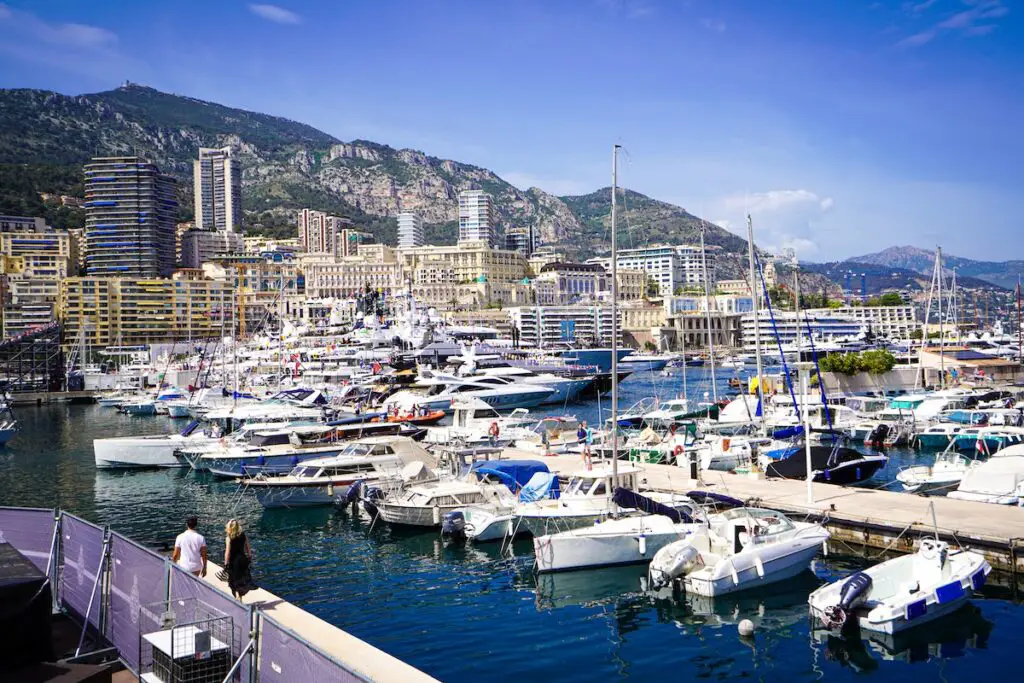
The streets of Monaco have seen plenty of drivers make their mark over the years. Graham Hill was the original “Mr Monaco”, winning the event five times in the 1960s. It is Ayrton Senna who has the most wins at Circuit de Monaco, having won six times in his career – including in five consecutive races between 1989 and 1993. Michael Schumacher won the race five times in his career, while Alain Prost was victorious four times.
You won’t get a race full of overtakes around the streets of Monaco, but you will get two hours of drivers pushing the cars to the limit of their abilities and to the absolute edge in terms of the track’s barriers. The beautiful setting and the pure magic of Monaco alone is enough to keep things entertaining.
Due to the coronavirus pandemic, the Monaco Grand Prix did not appear on the Formula 1 calendar in 2020. It was the first time since 1954 that Formula 1 did not visit Monaco during the season, ending a streak of 66 consecutive races at Circuit de Monaco – the longest held by any circuit in F1 history.
In September 2022, race organisers signed a new deal to keep the Monaco Grand Prix on the calendar until 2025. Race organisers then signed a longer-term deal in November 2024, which will keep Monaco until at least 2031. Under the new deal, the event will move from the final weekend in May to the first full weekend in June each year.
LEARN MORE ABOUT CIRCUIT DE MONACO
2024 MONACO GRAND PRIX RECAP
Charles Leclerc finally broke his home race curse, winning the 2024 Monaco Grand Prix in a race where all of the top ten starters maintained position throughout the afternoon.
The 2024 Monaco Grand Prix marked Formula 1’s 70th visit to the famous principality. As always, there were a few scrapes on the barriers during Free Practice – but only one red flag, the result of Valtteri Bottas crashing on Saturday morning.
Red Bull struggled on the streets, with Sergio Perez out in Q1 and Max Verstappen – who had taken every pole in 2024 prior to the Monaco race – qualifying only sixth after scraping the wall. Instead, it was home hero Charles Leclerc who lit up the timing sheets in qualifying, securing a third pole position at the Monaco Grand Prix.
Leclerc held his lead at Turn 1, where second and third starters Oscar Piastri and Carlos Sainz made light contact, resulting in a puncture and stoppage near the casino for the Ferrari driver. Behind the frontrunners, a heavy crash between Perez’s Red Bull and the two Haas cars brought out the red flags. Just before the red flags came out, at Portier, Esteban Ocon made contact with his Alpine team-mate Pierre Gasly in an audacious overtaking move, putting the former out of the race.
After a delay while debris was cleared and barrier repairs completed, the race restarted with Sainz – who had fallen to the back of the field after his stoppage – reinstated to third place in the order. It was a cleaner start the second time around, with all of the top ten drivers remaining in the same position not only for the restart of the race but for every lap thereafter.
The red flag meant that the drivers were all able to make their mandatory tyre change before the restart, leading to an afternoon with minimal pit stops. Lewis Hamilton and Max Verstappen were the only drivers in the top ten to make a visit to the pits but they only did so when they had built up enough of an advantage over the car behind them. Lance Stroll made a pit stop in an attempt to gain positions in the latter half of the race but any advantage was foiled when the Aston Martin driver scraped the wall and picked up a puncture.
It may have been a lacklustre race, with drivers keeping the pace relatively slower in order to not overuse their tyres, but it was not a lacklustre result for Leclerc, who finally broke his home race curse to win the Monaco Grand Prix. He became the first Monegasque driver to win in Monaco since Louis Chiron in 1931, scoring his first victory in over two years.
Piastri, in the special Senna-themed McLaren livery, recorded his first podium finish of the 2024 season, while Sainz was lucky to finish in the top three given his first lap troubles.
2023 MONACO GRAND PRIX RECAP
After a thrilling qualifying session, a mid-race rain shower wreaked havoc at the 2023 Monaco Grand Prix, where Verstappen clung on for victory.
After no fewer than four red flag periods across the practice sessions, the on-track mishaps continued in qualifying as Sergio Perez crashed out in Q1 at the first corner. That was it for Red Flags on qualifying day, but what followed was one of the most thrilling qualifying sessions of the season.
Max Verstappen was fastest in both Q1 and Q2, but Fernando Alonso set the pace in the early stages of Q3, with the top three covered by under a tenth of a second. Esteban Ocon then shot to the top of the timing tower, before Charles Leclerc and Fernando Alonso took turns on provisional pole. Verstappen was two tenths down on Alonso’s lap at the end of Sector 2 but found time in the final sector to secure pole position by just 0.084 seconds.
At the start on Sunday, Verstappen maintained his lead as all drivers made it around the opening lap unscathed, despite contact near the back of the field. Ten laps into the race, disputing third place, Carlos Sainz damaged his front wing after running into the back of Ocon’s Alpine.
Carlos Sainz – one of the frontrunners to make an early stop – was complaining about the strategy on which Ferrari had placed him. Perez, who had started from the back after his Saturday crash, made minimal progress which was hampered by a collision with a Haas, in which he lost his front wing.
By Lap 52, the skies above the circuit had darkened and rain began to fall. The track continued to dampen as the drivers struggled on their dry tyres in the wet sections of track. Second-placed Alonso pitted for a fresh set of slicks while other drivers began to gamble on intermediate tyres.
As Sainz slid off the track but continued in the race, Verstappen made a race-winning call for intermediate tyres. George Russell – already on intermediates – came off the track at Mirabeau and made contact with Perez when rejoining the circuit, for which he was given a 5-second penalty. Alonso eventually made the call to switch to intermediates while his team-mate Lance Stroll crashed at the hairpin.
Despite more close calls on track for Perez – with a tank slapper through the Swimming Pool section – and Logan Sargeant – who ran wide at the hairpin – Verstappen braved the weather to win the Monaco Grand Prix. Alonso remained in second place as Ocon secured the third podium finish of his career.
2022 MONACO GRAND PRIX RECAP
Sergio Perez emerged victorious on a wet afternoon on the streets of Monte Carlo in a heavily disrupted 2022 Monaco Grand Prix.
There were the usual lock-ups and near misses throughout the Monaco Grand Prix’s practice sessions, with Daniel Ricciardo suffering a hefty crash on Friday afternoon and Lance Stroll tapping the barriers on Saturday morning.
Come qualifying on Saturday afternoon, there were plenty of red flags. In Q1, Yuki Tsunoda caused a stoppage after hitting the barriers on the entry to the chicane, while a crash for Sergio Perez brought an early end to Q3. Carlos Sainz collected the Red Bull following his crash, while the other Ferrari of Charles Leclerc secured pole position at his home event for the second year in a row.
The weather had changed significantly by race time on Sunday morning, with the blue skies fading out to grey. A downpour just before the scheduled start of the race saw the start delayed. The race eventually began under Safety Car conditions but was soon red-flagged due to worsening conditions.
After a lengthy delay, the Safety Car finally re-emerged from the pit lane with the 20-car field following. Nicholas Latifi and Lance Stroll both hit the barriers under Safety Car conditions, while Pierre Gasly followed the duo in to switch to intermediate tyres. Gasly began to make progress through the midfield, prompting others to change their tyres.
Esteban Ocon made contact with Lewis Hamilton at Turn 1 shortly before race leader Leclerc came into the pits. Carlos Sainz then pitted three laps later. While Leclerc switched to a fresh set of intermediates, Sainz made the switch to slick tyres. Ferrari double stacked their cars when Sainz pitted, with Leclerc coming in just three laps after his first stop to also switch to dry tyres. A disgruntled Leclerc lost the lead to Sergio Perez as a result, Carlos Sainz was also ahead of him and Max Verstappen then emerged from the pit lane just ahead of the Ferrari too.
Sainz very nearly crashed out of the race with an aquaplaning moment on the main straight. Just a few laps later. Mick Schumacher crashed out of the race. The German’s Haas car broke into two in the impact, but Schumacher was unhurt. A red flag was shown.
The Grand Prix resumed with a rolling start and despite a lock-up on the restart lap for Perez, the Mexican remained ahead for the rest of the afternoon. The top four were nose to tail for the closing stages, but Monaco’s tight layout meant there were no changes for position. Perez claimed his first Monaco Grand Prix victory and he was joined in the top three by Sainz and Verstappen.
2021 MONACO GRAND PRIX RECAP
After a year away, Formula 1 returned to Monaco in 2021 where Max Verstappen added his name to the winners list on the streets of Monte Carlo and Charles Leclerc suffered more home heartbreak.
After scraping the barriers and bringing out the red flags in Free Practice 2, Mick Schumacher brought out the red flags once more on Saturday morning, which kept him on the sidelines for qualifying.
Ferrari looked strong heading into Saturday afternoon and it was home delight for Charles Leclerc, who took pole position for his home race. That was despite preventing anyone from setting a faster lap time with a badly timed visit into the barriers in the dying moments of Q3. There were fears over Leclerc’s gearbox, but Ferrari opted not to incur a grid drop and kept the potentially damaged gearbox in the car.
That proved to be an uninspired decision as Leclerc headed to the grid ahead of the race. “No, the gearbox guys,” came the Monegasque driver’s call from the cockpit as it became apparent that the gearbox was not salvageable. Resigned to watch the race trackside, Leclerc’s grid slot was left clear, leaving Max Verstappen as the de facto polesitter.
The race itself began with little in the way of incident, with Verstappen leading from Valtteri Bottas. Bottas endured a race-ending pit stop issue, with his right front tyre unable to be removed. It was a poor day all round for Mercedes, with Lewis Hamilton finishing only seventh. Bottas’ problems promoted Carlos Sainz and Lando Norris – sporting McLaren’s striking one-off Gulf livery – into the podium positions. Norris lapped team-mate Daniel Ricciardo during the race.
As has become the norm in Monaco, overtaking was at a premium, though Sebastian Vettel secured a top five finish with a fine overtake on Pierre Gasly. Verstappen secured his first win on the streets of Monaco, with all three podium finishers making their maiden Monaco rostrum appearance – the first time this had happened since 1996.
2019 MONACO GRAND PRIX RECAP
On a weekend where Formula 1 remembered the life of Niki Lauda, Lewis Hamilton brought home a fitting victory in tribute, despite pressure from Max Verstappen.
Formula 1 headed to Monaco in a sombre mood following the death of Niki Lauda. Teams paid tributes with messages on their cars, while Lewis Hamilton and Sebastian Vettel each opted to run special tribute helmets. In his first home race with Ferrari, an unimpressed Charles Leclerc was eliminated in Q1.
Hamilton started from pole but the action in the opening stages came courtesy of Leclerc, who made his way from sixteenth on the grid to twelfth. But his race unravelled as he picked up a puncture by making contact with Nico Hulkenberg and he eventually retired after sixteen laps.
The major drama of the afternoon came during the pit stops, as Max Verstappen was unsafely released from his pit box into the path of Valtteri Bottas. Bottas was forced to take avoiding action and damaged his front wing on the barriers. Verstappen picked up a five second penalty for the incident.
The track became blocked at La Rascasse as Kubica and Giovinazzi made contact, bringing out the yellow flags. Verstappen closed in on leader Hamilton in the second half of the race, causing Hamilton to become wary of the threat from behind. Despite nearly passing the Mercedes at the chicane after the tunnel, and making light contact, Verstappen’s attempts were ultimately futile due to his penalty. Hamilton took his third Monaco victory, while Vettel and Bottas took the final podium positions.
2018 MONACO GRAND PRIX RECAP
Daniel Ricciardo gained redemption for his 2016 Monaco loss as he dominated the weekend in the Principality, nursing his wounded car to victory.
Red Bull’s Daniel Ricciardo was fastest in all of the first three practice sessions, while team-mate Max Verstappen crashed at the end of the final hour of practice, leaving him unable to compete in Qualifying. Ricciardo went on to take a second pole in Monaco, with Sebastian Vettel starting alongside him on the front row.
Ricciardo stayed ahead on the run to turn one and pitted at the end of the sixteenth lap, never losing the lead. The Australian’s hopes began to falter before lap thirty, though, as he declared he was losing engine power.
While Fernando Alonso was sidelined with gearbox issues, Verstappen was charging through the field, eventually finishing the race in ninth place with a sense of missed opportunity. Charles Leclerc became the first Monegasque driver to compete at home in over twenty years, but his weekend ended in a collision with Brendon Hartley due to a brake failure.
Despite the power unit problems, Ricciardo was able to hold on to the lead, eventually finishing just under eight seconds ahead of Vettel. With Lewis Hamilton coming home third, the top three finished in the same order they had qualified.
CIRCUIT DE MONACO FAST FACTS
- Setting up Circuit de Monaco for the Monaco Grand Prix requires six weeks of preparations, with the placing of 3,600 tyres for tyre barriers, 33km of guard rails and 20,000 square metres of catch fencing. In addition, 1,100 tonnes of seating is built.
- 670 marshals help out at the Circuit de Monaco over Grand Prix weekend.
- Due to political unrest in France, there were concerns about a power outage during the 1968 Monaco Grand Prix. Race organisers borrowed power generators from a local film company to make sure the tunnel stayed illuminated during the race!
- Until 2024, Louis Chiron was the only Monegasque driver to win the Monaco Grand Prix. Charles Leclerc became the second. In the 1955 Monaco Grand Prix, Chiron became the oldest driver to have ever started an F1 race.
- Between them, Ayrton Senna and Alain Prost won ten consecutive Monaco Grands Prix between 1984 and 1993.
- A wave crashing onto the circuit caused a huge crash on the opening lap of the 1950 Monaco Grand Prix.
- In the 1950 Monaco Grand Prix, Harry Schell became the first driver to start a round of the championship in a rear-engined car.
- Until 2022, Monaco was the only round of the championship where Free Practice did not take place on a Friday. Instead, it was held on Thursday.
- Along with the Indianapolis 500 and the 24 Hours of Le Mans, Monaco is one third of motorsport’s Triple Crown. Graham Hill is the only driver to have won all three events.
MONACO GP WINNERS AND POLESITTERS
| Year | Polesitter | Team On Pole | Winner | Winning Team |
|---|---|---|---|---|
| 1950 | Juan Manuel Fangio | Alfa Romeo | Juan Manuel Fangio | Alfa Romeo |
| 1955 | Juan Manuel Fangio | Mercedes | Maurice Trintignant | Ferrari |
| 1956 | Juan Manuel Fangio | Ferrari | Stirling Moss | Maserati |
| 1957 | Juan Manuel Fangio | Maserati | Juan Manuel Fangio | Maserati |
| 1958 | Tony Brooks | Vanwall | Maurice Trintignant | Cooper |
| 1959 | Stirling Moss | Cooper | Jack Brabham | Cooper |
| 1960 | Stirling Moss | Lotus | Stirling Moss | Lotus |
| 1961 | Stirling Moss | Lotus | Stirling Moss | Lotus |
| 1962 | Jim Clark | Lotus | Bruce McLaren | Cooper |
| 1963 | Jim Clark | Lotus | Graham Hill | BRM |
| 1964 | Jim Clark | Lotus | Graham Hill | BRM |
| 1965 | Graham Hill | BRM | Graham Hill | BRM |
| 1966 | Jim Clark | Lotus | Jackie Stewart | BRM |
| 1967 | Jack Brabham | Brabham | Denny Hulme | Brabham |
| 1968 | Graham Hill | Lotus | Graham Hill | Lotus |
| 1969 | Jackie Stewart | Matra | Graham Hill | Lotus |
| 1970 | Jackie Stewart | March | Jochen Rindt | Lotus |
| 1971 | Jackie Stewart | Tyrrell | Jackie Stewart | Tyrrell |
| 1972 | Emerson Fittipaldi | Lotus | Jean-Pierre Beltoise | BRM |
| 1973 | Jackie Stewart | Tyrrell | Jackie Stewart | Tyrrell |
| 1974 | Niki Lauda | Ferrari | Ronnie Peterson | Lotus |
| 1975 | Niki Lauda | Ferrari | Niki Lauda | Ferrari |
| 1976 | Niki Lauda | Ferrari | Niki Lauda | Ferrari |
| 1977 | John Watson | Brabham | Jody Scheckter | Wolf |
| 1978 | Carlos Reutemann | Ferrari | Patrick Depailler | Tyrrell |
| 1979 | Jody Scheckter | Ferrari | Jody Scheckter | Ferrari |
| 1980 | Didier Pironi | Ligier | Carlos Reutemann | Williams |
| 1981 | Nelson Piquet | Brabham | Gilles Villeneuve | Ferrari |
| 1982 | Rene Arnoux | Renault | Riccardo Patrese | Brabham |
| 1983 | Alain Prost | Renault | Keke Rosberg | Williams |
| 1984 | Alain Prost | McLaren | Alain Prost | McLaren |
| 1985 | Ayrton Senna | Lotus | Alain Prost | McLaren |
| 1986 | Alain Prost | McLaren | Alain Prost | McLaren |
| 1987 | Nigel Mansell | Williams | Ayrton Senna | Lotus |
| 1988 | Ayrton Senna | McLaren | Alain Prost | McLaren |
| 1989 | Ayrton Senna | McLaren | Ayrton Senna | McLaren |
| 1990 | Ayrton Senna | McLaren | Ayrton Senna | McLaren |
| 1991 | Ayrton Senna | McLaren | Ayrton Senna | McLaren |
| 1992 | Nigel Mansell | Williams | Ayrton Senna | McLaren |
| 1993 | Alain Prost | Williams | Ayrton Senna | McLaren |
| 1994 | Michael Schumacher | Benetton | Michael Schumacher | Benetton |
| 1995 | Damon Hill | Williams | Michael Schumacher | Benetton |
| 1996 | Michael Schumacher | Ferrari | Olivier Panis | Ligier |
| 1997 | Heinz-Harald Frentzen | Williams | Michael Schumacher | Ferrari |
| 1998 | Mika Häkkinen | McLaren | Mika Häkkinen | McLaren |
| 1999 | Mika Häkkinen | McLaren | Michael Schumacher | Ferrari |
| 2000 | Michael Schumacher | Ferrari | David Coulthard | McLaren |
| 2001 | David Coulthard | McLaren | Michael Schumacher | Ferrari |
| 2002 | Juan Pablo Montoya | Williams | David Coulthard | McLaren |
| 2003 | Ralf Schumacher | Williams | Juan Pablo Montoya | Williams |
| 2004 | Jarno Trulli | Renault | Jarno Trulli | Renault |
| 2005 | Kimi Räikkönen | McLaren | Kimi Räikkönen | McLaren |
| 2006 | Fernando Alonso | Renault | Fernando Alonso | Renault |
| 2007 | Fernando Alonso | McLaren | Fernando Alonso | McLaren |
| 2008 | Felipe Massa | Ferrari | Lewis Hamilton | McLaren |
| 2009 | Jenson Button | Brawn GP | Jenson Button | Brawn GP |
| 2010 | Mark Webber | Red Bull | Mark Webber | Red Bull |
| 2011 | Sebastian Vettel | Red Bull | Sebastian Vettel | Red Bull |
| 2012 | Mark Webber | Red Bull | Mark Webber | Red Bull |
| 2013 | Nico Rosberg | Mercedes | Nico Rosberg | Mercedes |
| 2014 | Nico Rosberg | Mercedes | Nico Rosberg | Mercedes |
| 2015 | Lewis Hamilton | Mercedes | Nico Rosberg | Mercedes |
| 2016 | Daniel Ricciardo | Red Bull | Lewis Hamilton | Mercedes |
| 2017 | Kimi Räikkönen | Ferrari | Sebastian Vettel | Ferrari |
| 2018 | Daniel Ricciardo | Red Bull | Daniel Ricciardo | Red Bull |
| 2019 | Lewis Hamilton | Mercedes | Lewis Hamilton | Mercedes |
| 2021 | Charles Leclerc | Ferrari | Max Verstappen | Red Bull |
| 2022 | Charles Leclerc | Ferrari | Sergio Perez | Red Bull |
| 2023 | Max Verstappen | Red Bull | Max Verstappen | Red Bull |
| 2024 | Charles Leclerc | Ferrari | Charles Leclerc | Ferrari |
| 2025 | Lando Norris | McLaren | Lando Norris | McLaren |

